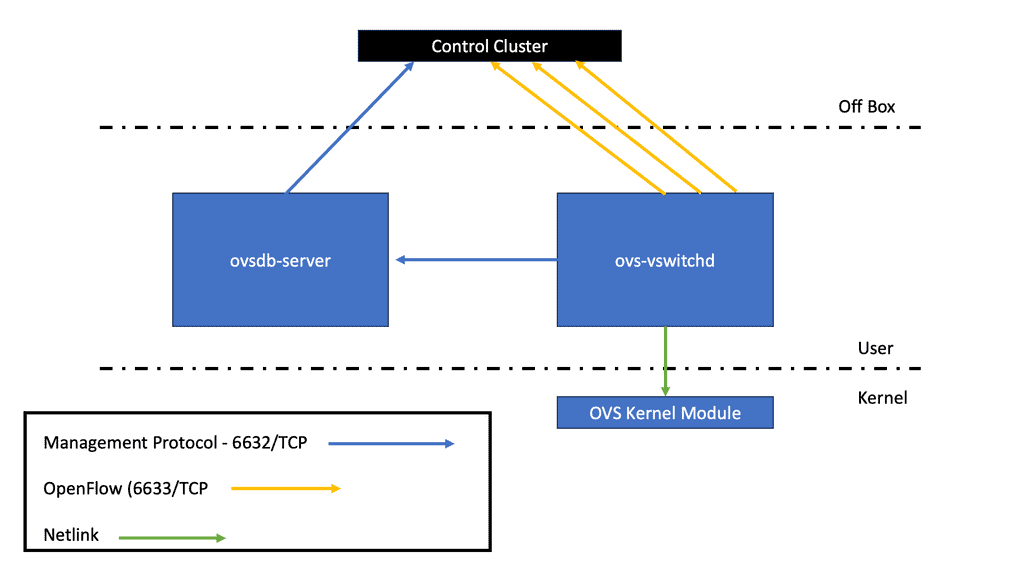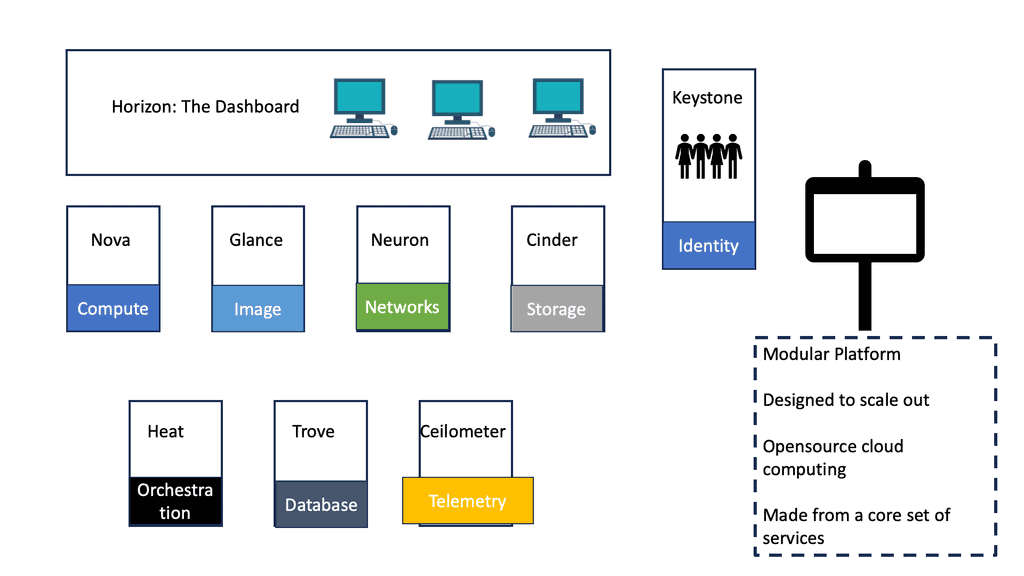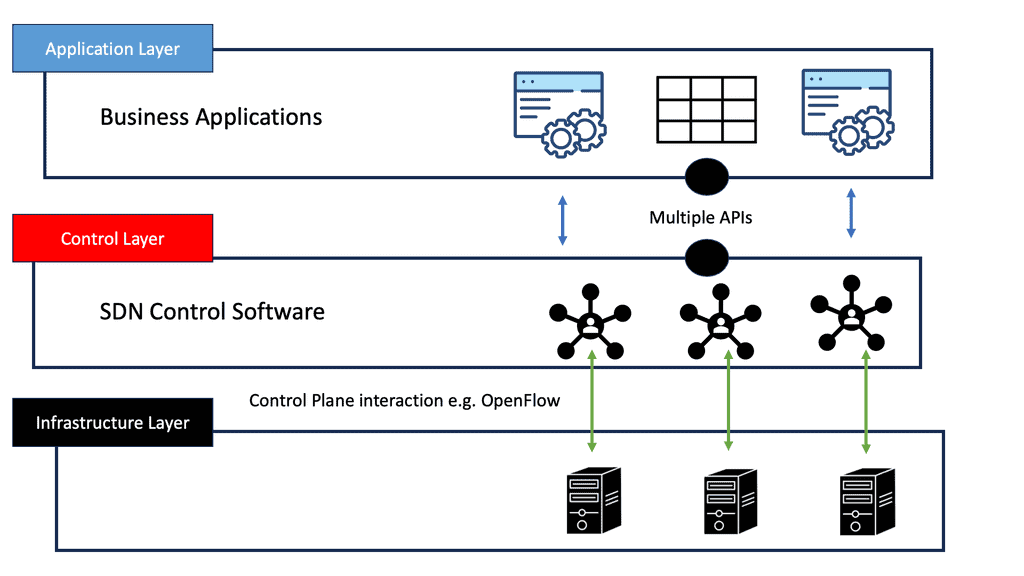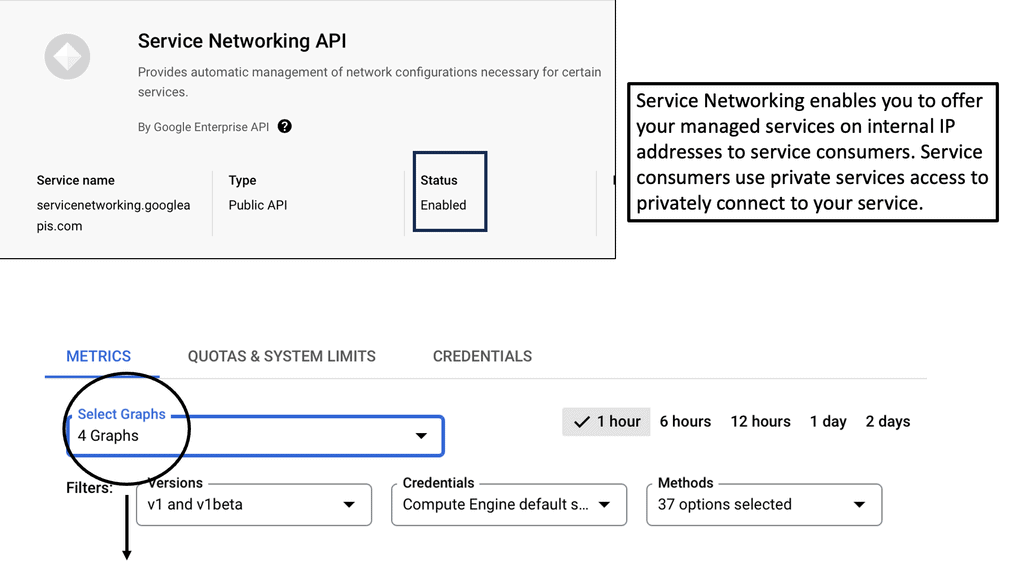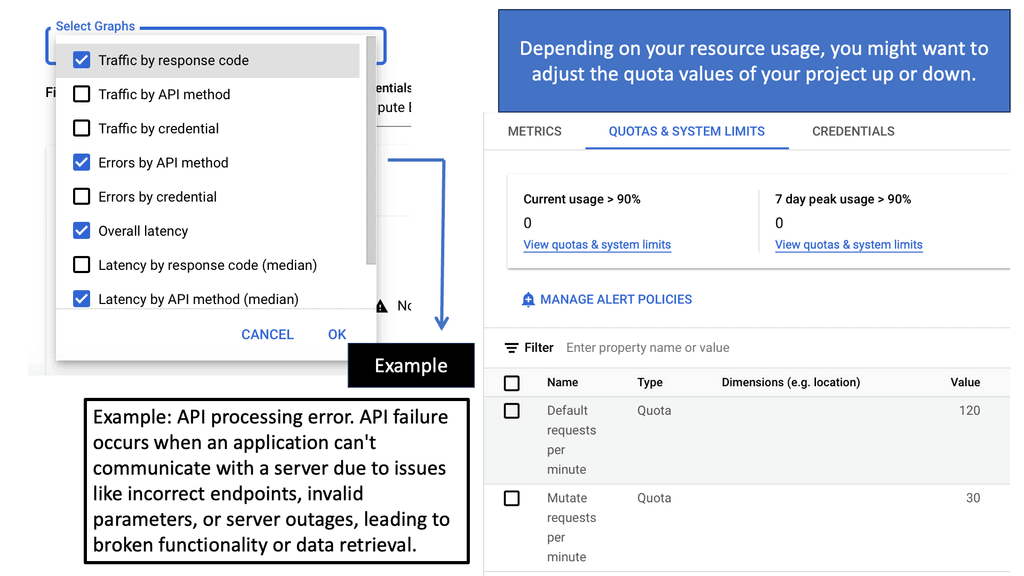OpenvSwitch Performance
In today's rapidly evolving digital landscape, network performance is a crucial aspect for businesses and organizations. To meet the increasing demands for scalability, flexibility, and efficiency, many turn to OpenvSwitch, an open-source virtual switch that provides advanced network capabilities. In this blog post, we will explore the various ways OpenvSwitch enhances network performance and the benefits it offers.
OpenvSwitch, also known as OVS, is a software-based switch that enables network virtualization and software-defined networking (SDN). It operates at the data link layer and allows for the creation of virtual networks, connecting virtual machines and containers across physical hosts. OVS offers a range of features, including VLAN tagging, tunneling protocols, and flow-based forwarding, making it a powerful tool for network administrators.
Improved Network Throughput: One of the key advantages of OpenvSwitch is its ability to enhance network throughput. By leveraging hardware offloading capabilities and utilizing multiple CPU cores efficiently, OpenvSwitch can handle higher traffic volumes with reduced latency. Additionally, OVS supports advanced packet processing techniques, such as DPDK (Data Plane Development Kit), which further improves performance in high-speed networking scenarios.>
Dynamic Load Balancing: Another notable feature of OpenvSwitch is its support for dynamic load balancing. OVS intelligently distributes network traffic across multiple physical or virtual links, ensuring efficient utilization of available resources. This load balancing capability helps to prevent network congestion, optimize network performance, and improve overall system reliability.
Network Monitoring and Analytics: OpenvSwitch provides comprehensive network monitoring and analytics capabilities. It supports integration with monitoring tools like sFlow and NetFlow, allowing administrators to gain insights into network traffic patterns, identify bottlenecks, and make informed decisions for network optimization. Real-time visibility into network performance metrics enables proactive troubleshooting and facilitates better network management.
OpenvSwitch is a powerful tool for enhancing network performance in modern computing environments. With its advanced features, including improved throughput, dynamic load balancing, and robust monitoring capabilities, OpenvSwitch empowers network administrators to optimize their infrastructure for better scalability, efficiency, and reliability. By adopting OpenvSwitch, organizations can stay ahead in the ever-evolving world of networking.
Matt Conran
Highlights: OpenvSwitch Performance
Highlighting the OVS
OVS is an essential part of networking in the OpenStack cloud. Open vSwitch is not a part of the OpenStack project. However, OVS is used in most implementations of OpenStack clouds. It has also been integrated into other virtual management systems, including OpenQRM, OpenNebula, and oVirt. Open vSwitch can support protocols such as OpenFlow, GRE, VLAN, VXLAN, NetFlow, sFlow, SPAN, RSPAN, and LACP. In addition, it can work in distributed configurations with a central controller.
1. High Throughput: OpenvSwitch is known for its high throughput capabilities, which allow it to handle a large volume of network traffic without compromising performance. By leveraging hardware offloading and advanced flow processing techniques, OpenvSwitch ensures optimal packet processing and forwarding, reducing latency and maximizing network efficiency.
2. Flexible Load Balancing: Load balancing is crucial in modern networks to distribute traffic evenly across multiple network paths, preventing congestion and maximizing network utilization. OpenvSwitch supports various load balancing algorithms, including Layer 2, Layer 3, and Layer 4 load balancing, enabling organizations to achieve efficient traffic distribution and enhance network performance.
3. Scalability: OpenvSwitch provides excellent scalability, allowing organizations to expand their network infrastructure seamlessly. With OpenvSwitch, network administrators can easily add new virtual machines, containers, or hosts without disrupting the overall network performance. This flexibility ensures that organizations can adapt to changing network requirements without compromising performance.
4. Network Virtualization: OpenvSwitch supports network virtualization, enabling the creation of virtual network overlays. These overlays help improve network agility and efficiency by allowing organizations to isolate and manage different network segments independently. By leveraging OpenvSwitch’s network virtualization capabilities, organizations can optimize network performance and enhance network security.
5. Integration with SDN Controllers: OpenvSwitch can seamlessly integrate with Software-Defined Networking (SDN) controllers, such as OpenDaylight and OpenStack, providing centralized network management and control. This integration allows organizations to automate network provisioning, configuration, and optimization, improving network performance and operational efficiency.
6. Monitoring and Analytics: OpenvSwitch offers extensive monitoring and analytics capabilities, allowing organizations to gain valuable insights into network performance and traffic patterns. By leveraging these features, network administrators can identify bottlenecks, optimize network configurations, and proactively address performance issues, improving network efficiency.
**Understanding OpenvSwitch Performance**
OpenvSwitch, an open-source multi-layer virtual switch, serves as the backbone of virtualized networks. It provides a flexible and programmable platform for managing network flows, enabling seamless communication between virtual machines and physical networks. By supporting various protocols like OpenFlow, it empowers network administrators with granular control and monitoring capabilities.
To harness the full potential of OpenvSwitch, it is crucial to optimize its performance. Let’s explore some techniques that can enhance OpenvSwitch performance:
1. Kernel Bypass: Leveraging technologies like DPDK (Data Plane Development Kit) or XDP (eXpress Data Path) can bypass the kernel and directly access network interfaces, reducing latency and improving throughput.
2. Offloading: Utilizing hardware offloading capabilities, such as SR-IOV (Single Root I/O Virtualization) or OVS-DPDK (OpenvSwitch with DPDK), can offload packet processing tasks to specialized network interface cards, boosting performance.
3. Flow Table Optimization: Fine-tuning the flow table size, timeouts, and lookup algorithms can significantly impact OpenvSwitch performance. By carefully configuring these parameters, administrators can optimize resource utilization and minimize packet processing overhead.
To evaluate the performance of OpenvSwitch, comprehensive benchmarking is essential. Let’s explore some key metrics and benchmarks employed to gauge OpenvSwitch performance:
1. Throughput: Measuring the amount of data that can be processed by OpenvSwitch per unit of time provides insights into its performance capabilities. Tools like iperf or pktgen can be used to generate synthetic traffic and measure throughput.
2. Latency: Assessing the time taken for packets to traverse through OpenvSwitch is critical for latency-sensitive applications. Tools like ping or DPDK-pktgen can be employed to measure latency and identify potential bottlenecks.
3. Scalability: OpenvSwitch performance should be evaluated under different network loads and configurations. Scalability tests can help identify the maximum number of flows, ports, or virtual machines that OpenvSwitch can handle efficiently.
The virtual world of networking
1: – Virtualization requires an understanding of how virtual networking works. Without virtual networking, justifying the costs would be very difficult. You can run multiple virtual machines using a virtualization host, each with its dedicated physical network port.
2: – By implementing virtual networking, we can consolidate networking in a more manageable way regarding cost and administration. We can use an approximate metaphor if you are familiar with VMware-based networking – Open vSwitch is similar to vSphere Distributed Switch.
3: – The implementation of Open vSwitch consists of the kernel module (the data plane) and the user-space tools (the control panel). The data plane was moved into the kernel to process incoming data packets as fast as possible. The switch daemon implements and manages several OVS switches using the Netlink socket.
There is no specific SDN controller
Unlike VMware’s NSX and vSphere distributed switches, Open vSwitch has no specific SDN controller to manage its capabilities. Several NSX components are used, including vCenter. OVS controls an SDN controller from another company that uses the OpenFlow protocol using ovs-vswitchd. The OVSDB server maintains a switch table database that external clients can access via JSON-RPC. The persistent database ovsdb, designed to survive restarts, currently has around 13 tables.
Many clients prefer VMware’s NSX approach to SDN and Open vSwitch. VMware’s integration with OpenStack and NSX integration with Linux-based KVM hosts (via Open vSwitch and additional agents) can be beneficial.
As an example of the use of Open vSwitch-based technologies in NSX, there are things such as hardware VTEP integration through Open vSwitch Database, GENEVE networks being extended to KVM hosts using Open vSwitch/NSX integration, etc.
Bridges and Flow Rules
Open vSwitch is a software switch commonly seen in Open Networking used to connect physically to virtual interfaces. When considering OpenvSwitch’s performance, it uses virtual bridges and flow rules to forward packets and consists of several switches, including provider, integration, and tunnel bridge. Each virtual switch has a different role in the network—the tunnel bridge creates the overlay, and the integration switch is the leading connectivity bridge.
OVS Bridge
The terms bridge and switch are used interchangeably with Neutron networking. The OVS bridge has user actions issued in userspace and a set of flows programmed in the Linux kernel with match criteria and actions. The kernel module is where all the packet processing occurs, similar to an ASIC on a standard physical/hardware switch.
The OVS has its daemon as the userspace element, running in userspace, controlling how the kernel gets programmed. It also uses an Open vSwitch Database Server (OVSDB), a network configuration protocol.
For additional information, you may find the following helpful:
Highlights: OpenvSwitch Performance
Linux Networking Subsystem
– Initially, OpenvSwitch’s performance was good with steady-state traffic. The kernel was multithreaded, so established flows performed excellently. However, specific traffic patterns would give OpenvSwitch a headache and degrade its performance. For example, peer-to-peer applications initiating many quickly generated connections would hit it poorly.
– This is because the kernel contained recently cached flows, and when a packet that wasn’t an exact cache match would result in a cache miss and get sent to userspace. In addition, continuous user-kernel space interaction kills performance. Unlike the kernel, userspace is single-threaded and does not have the performance to process large amounts of packets or set up connections quickly.
– They needed to improve the OpenvSwitch performance of the connection setup. So they added Megaflow and wildcard entries in the kernel, made userspace multithreaded, and introduced various enhancements to the classifier.
– They have spent much time putting mega flows in the kernel and don’t want to undo all that good work. This is a foundation design principle to support stateful service and connection tracking implementation. Anything they add to Open vSwitch must not affect performance.
Stateless vs. stateful functionality
It’s an excellent stateless flow-forwarding device and supports finer-grained flow fields, but there is a gap in supporting stateful services. They are currently expanding their feature set to include stateful connection tracking, stateful inspection firewall, and deep packet inspection services.
The current matching enables you to match IP and port numbers. Nothing higher up the application stack, such as application ID, is used. Stateless services offer better protection than stateless services as it delves deeper into the packet.
What is a stateless function?
Stateless means once a packet arrives, the device can only affect what’s currently in that packet. It looks at the headers and bases the policy on those it just inspected. Evaluation is performed on packet contents statically and is unaware of any data patterns.
Typically, stateless inspects the following elements within a packet – source/destination IP, source/destination port, and protocol type. No additional Layer 3 or 4 inspection, such as TCP control flags, sequence numbers, and ACK fields, is carried out.
For example, if the requirement involves matching on a TCP window parameter, stateless tracking won’t be able to track if packets are within a specific window. Regarding Network Address Translation (NAT), performing stateless translation from one IP address to another is possible, as well as adjusting the MAC address for external forwarding, but it won’t handle anything complicated.
Today’s security requires more advanced filtering than Layer 3 and 4 headers. The stateful function watches everything end-to-end and knows precisely the TCP connection’s stage. This enables more detailed information than source/destination IP or port numbers.
Connection tracking is fundamental to the stateful virtual firewall and supports enhanced NAT functionality. We need to consider when traffic is based on sessions and filter according to other parameters, such as a connection’s state.
The stateful inspection goes deeper and tracks every connection, examining the packet headers and the application layer information in the payload. Stateful devices can determine if a connection has been negotiated, reset, established, and closed.
In addition, it provides complete protection against many high-level attacks by allowing administrators to be specific with their filtering, such as not allowing the peer-to-peer (P2P) application to be transferred over HTTP tunnels.
Traditionally, Open vSwitch has two stateless approaches to firewalling:
Match on TCP flags
The ability to match on TCP flags and enforce policy on the SYN packets, permitting ALL ACK and RST. This approach gains in performance due to cached entries existing in the kernel. Keeping as much as possible in the kernel limits cache misses and user space interaction.
What it gains in performance is what it lacks in security. It is not very secure, as you allow ANY packet with an ACK or RST bit set. It will enable non-established flows through with ACT or RST set. An attacker could quickly probe with a standard TCP port scanning tool, sending an ACK in and examining received responses.
Use the “learn” action.
The Open vSwitch ovs-vswitchd process default acts like a standard bridge and learns MAC addresses. It will continue to connect to the controller in the background, and when it succeeds, it will stop acting like a traditional MAC-learning switch. The userspace element maintains MAC tables and generates flows with matches and actions. This allows new OpenFlow rules to be inserted into userspace.
When a packet arrives, it gets pushed to userspace, and the userspace function uses the “learn” action to create the reverse of the five tuples, inserting a new flow into the OpenFlow table. The process comes at a performance cost and is not as quick as having an existing connection. It forces every new flow into userspace.
These methods are sufficient for some network requirements but don’t carry out any deep actions on TCP to ensure there are no overlapping segments, for example. In addition, they cannot inspect related flows to support complex protocols like FTP and SIP, which have different flows for data and control.
The control channel negotiates with the remote end of the data flow configuration. For example, the client initiates a TCP port 21 control connection with FTP. The remote FTP server then opens up a data socket on port 20.
OpenvSwitch Performance: Contract integration with Open vSwitch
The Open vSwitch team proposes using the conntrack module in Linux to enable stateful services. This is an alternative to using Linux Bridge with IPtables.
Contract stores the state of all connections and informs the Netfilter framework of the connection state. Transit packets are connection tracked in the PRE_ROUTING chain, and anything locally generated is performed in the OUTPUT chain. Packets may have four userland states: NEW, ESTABLISHED, RELATED, and INVALID. Outside of the userland state, we have packet states in the kernel; for example, TCP SYN_SENT lets us know we have only seen a TCP SYN in one direction.
If the conntrack sees one SYN packet, it considers the packet new. Once it sees a return TCP SYN/ACK, it thinks the connection is established, and data can be transmitted. Once a return packet is received, the packet state changes to ESTABLISHED in the PRE_ROUTING chain of the nat table.
The Open vSwitch can call into the kernel connection tracker. This will allow stateful tracking of flows and also the support of Application Layer Gateway (ALG) to punch holes for related “data” channels needed for protocols like FTP and SIP.
Netfilter Framework
A fundamental part of connection tracking is the Netfilter framework. The Netfilter framework provides a variety of functionalities – packet selection, packet filtering, connection tracking, and NAT. In addition, the Netfilter framework enables callbacks in the packet traversing the network stack.
These callbacks are known as Netfilter hooks, which enable an operation on the packet. The essence of Netfilter is the ability to activate hooks.
They are called upon at distinct points along with packet traversal in the kernel. The five points in the network stack where you can implement hooks include NF_INET_PRE_ROUTING, NF_INET_LOCAL_IN, NF_INET_FORWARD, NF_INET_POST_ROUTING, NF_INET_LOCAL_OUT. Once a packet comes in and passes initial tests ( checksum, etc.), they are passed to the Netfilter framework NF_IP_PRE_ROUTING hook.
Once the packet passes this code, a routing decision is made. If locally destined, the Netfilter framework is called for the NF_IP_LOCAL_IN or externally forwarded via the NF_IP_FORWARD hook. The packet finally goes to the NF_IP_POST_ROUTING before being placed on the wire for transmission.
Netfilter conntrack integration
Packets arrive at the Open vSwitch flow table and are sent to Netfilter connection tracking. This is the original Linux connection tracker; it hasn’t changed. The connection tracking table enforces the flow and TCP window sizes and makes the flow state available to the Open vSwitch table—NEW, ESTABLISHED, etc. Now, it gets sent back to the Open vSwitch flow tables with the connection bits set.
Connection tracking allows tracking to set 5 tuples and store some information within the datapath. It exposes generic concepts about those connections or whether they are parts of a related flow, like FTP or SIP.
This functionality enables the steering of microflows based on a policy, whether the packet is part of a NEW or ESTABLISHED flow state, rather than simply applying a policy based on IP or port number.
OpenvSwitch is an excellent choice for organizations looking to enhance their network performance. Its high throughput, flexible load balancing, scalability, network virtualization, integration with SDN controllers, and monitoring capabilities make it a powerful tool for optimizing network efficiency. By leveraging OpenvSwitch’s performance-enhancing features, organizations can ensure a smooth and efficient network infrastructure that meets their growing demands.
Summary: OpenvSwitch Performance
OpenvSwitch, a virtual switch designed for multi-server virtualization environments, has gained significant popularity due to its flexibility and scalability. In this blog post, we explored OpenvSwitch’s performance aspects and capabilities in enhancing network efficiency and throughput.
Understanding OpenvSwitch Performance
OpenvSwitch is known for efficiently handling large amounts of network traffic. It achieves this through various performance-enhancing features such as flow offloading, hardware acceleration, and parallel processing. OpenvSwitch can reduce CPU overhead and boost overall network performance by offloading flows to the hardware.
Optimizing OpenvSwitch for Maximum Throughput
Several optimization techniques can be employed to achieve maximum throughput with OpenvSwitch. One key aspect is tuning the datapath. By adjusting parameters like buffer sizes, packet queues, and interrupt coalescing, administrators can fine-tune OpenvSwitch to match the specific requirements of their network environment. Additionally, leveraging hardware offloading capabilities and optimizing flow rules can enhance performance.
Benchmarks and Performance Testing
Measuring and benchmarking OpenvSwitch’s performance is crucial to understanding its capabilities and identifying potential bottlenecks. Through rigorous performance testing, administrators can gain insights into packet forwarding rates, latency, and CPU utilization under different workload scenarios. This information can guide network optimization efforts and help identify areas for further improvement.
Real-World Use Cases and Success Stories
OpenvSwitch has been widely adopted in both enterprise and cloud environments. This section will highlight real-world use cases where OpenvSwitch has demonstrated its performance prowess. From high-speed data centers to virtualized network functions, we will explore success stories that showcase OpenvSwitch’s ability to handle diverse workloads while maintaining optimal performance.
Conclusion:
OpenvSwitch proves to be a powerful tool in virtualized networks, offering exceptional performance and scalability. By understanding its performance characteristics, optimizing configurations, and conducting performance testing, administrators can unlock the full potential of OpenvSwitch and build highly efficient network infrastructures.


